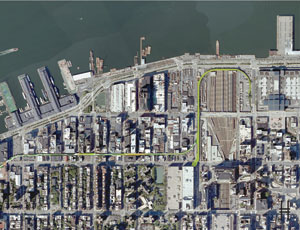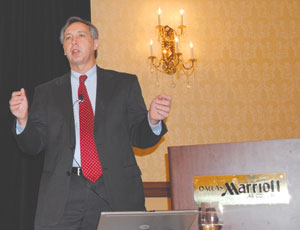Despite, or perhaps because of, the city’s density and relative proximity to a public park, walking is an almost extinct pastime in New York City. In certain enclaves, elderly immigrants do spend their evenings strolling in pairs with hands clasped behind their backs. Transplants from more scenic U.S. states escape the city altogether for some fresh air upstate. Some fortunates walk to work. But with a metropolitan obsession with fitness and competition, most of the city’s citizens enjoy parks in an uber-active manner, be it training for marathons in Central Park or cycling faster than the adjacent car traffic along the Hudson River Park. New Yorkers not walking at a brisk pace from point A to point B—perpetually irritated with meandering tourists, dodging cars, multitasking—are usually walking their dogs.



It’s the resurgence of aimless meandering that has given the High Line — the city’s new elevated park that is gradually taking over the abandoned West Side rail line — its most immediate success. A “post-industrial instrument of leisure” is what James Corner, the principal of Field Operations, the design team lead on the project, calls the new $152 million High Line.
“I love the way people have reintroduced themselves to the idea of promenading in park spaces,” says Lisa Switkin, an associate principal at James Corner Field Operations. “It used to be done a lot, and now it’s reviving.”
When the completed park stretches from Gansevoort Street all the way to 34th Street, it will encompass just 7.08 acres but run for an uninterrupted 1.45 miles — ideal for a good “wander.”
Much of its appeal to “walkers” may have to do with just how natural the space feels. Like the Will Smith sci-fi film “I Am Legend,” the park gives visitors an idea of what the city would look like if the humans finally left. Since the rail line itself was last used in 1980, the tracks have been overrun by grasses, weeds, and even trees. There’s a natural pattern to their growth. “When the trains stopped running, we saw that plant life was different across the High line,” said Katie Lorah of Friends of the High Line, the non-profit that originally put the redevelopment project in motion more than a decade ago. “When the line was open to river and winds and soil erosion, it was all grasses and perennial wild flowers. Other shadowed parts had trees and shrubs. We have a much higher number of native species, designed to be more sustainable — the old High Line had a lot of invasives.”
The design team, with the eminent Dutch garden designer Piet Oudolf overseeing planting design, has reintroduced these microclimates in the same locations they found them for a more sustainable park. Somehow, our plant brain must recognize that.
Ever since last summer’s opening of the High Line’s first phase, which runs nine blocks from Gansevoort Street to 20th Street, visitors have managed to put it to uses other than walking. Art classes, tanning, people-watching and sleeping are some of the more obvious activities, but there’s also a New York City flair to the way people use it. Staff at Andre Balazs’ Standard Hotel, an architectural icon in its own right that straddles the High Line around 13th Street, have allegedly encouraged their guests to use the hotel’s clear floor-to-ceiling windows for their exhibitionist amusement, making people-watching from the High Line not so PG-rated. Ambitious locals followed suit, and a woman began performing regular cabaret shows on a fireplace overlooking the park.
Section 2, due for completion in early 2011, will extend from 20th Street to 30th Street, with access points at 23rd, 27th and 30th Streets. Compared to Section 1, Section 2 is simpler in construction: it’s almost uniformly 30-ft-wide (Section 1 widened up to 65 ft), doesn’t split into more than one level or dead-end into adjacent buildings, and doesn’t cross over any avenues. But like its predecessor, Section 2 features are “particular to microclimates,” according to Switkin. The most...

.jpg?height=200&t=1637088509&width=200)
Post a comment to this article
Report Abusive Comment